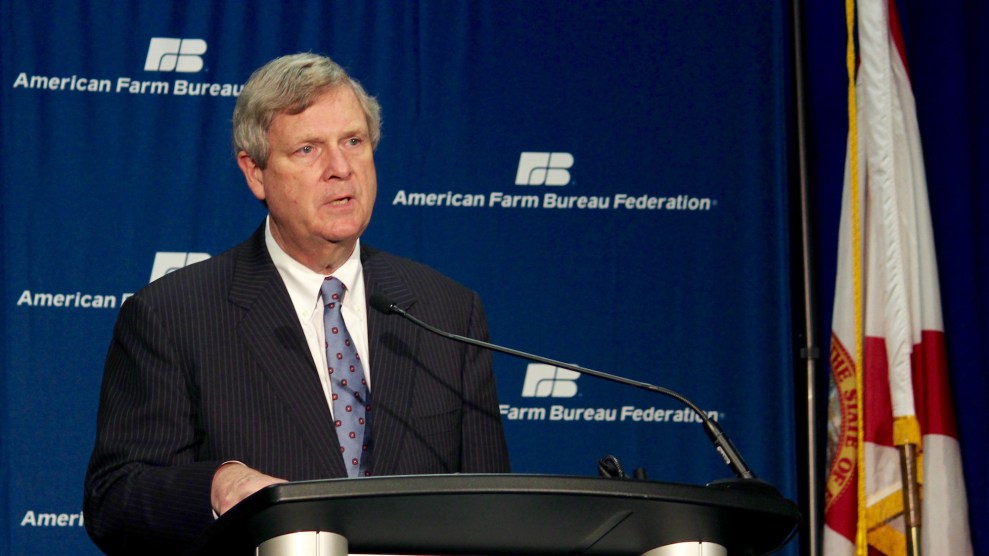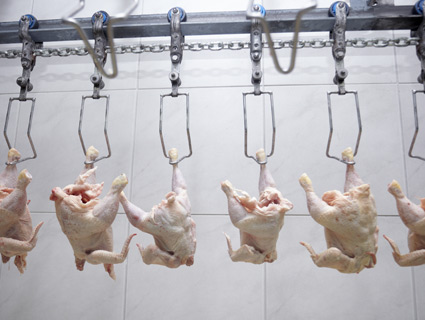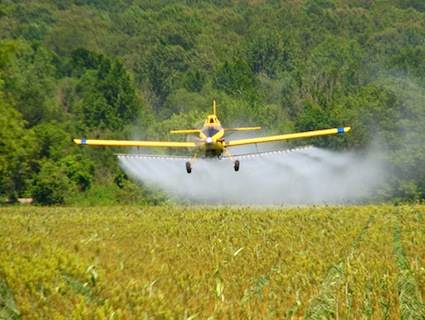
Normcore: Vilsack addresses the American Farm Bureau Federation. USDA/Flicker
Tom Vilsack is a trendy guy—but only if by “trendy,” you mean “normcore.” He has spent the past eight years as secretary of the US Department of Agriculture—the country cousin of presidential cabinet positions. He’s a solid centrist Democrat from Iowa, where he served two terms as governor as well as a stint as mayor of a town called Mt. Pleasant (pop. 8,668). He even calls himself a “workhorse, not a show horse.” But he has been generating massive buzz as the possible vice presidential pick of presumptive Democratic nominee Hillary Clinton, recently catapulting to the upper echelons of her Veep short list.
If she picks Vilsack and the ticket wins (the polling site 538 gives Clinton a 63 percent chance to prevail in November), the country will have its first vice president to be plucked from the USDA since Franklin Roosevelt tapped Vilsack’s fellow Iowan Henry Wallace in 1940. In other words, we’d have a food-farm policy wonk a heartbeat away from the presidency.
But what kind of food policy wonk is Vilsack?
- He’s no stranger to agribiz. As Iowa governor, Vilsack endeared himself to the state’s ag interests. Back in 2001, the Biotechnology Industry Organization—a trade group representing seed/agrichemical players like Monsanto, DuPont, BASF, Bayer, and Syngenta—named him “Governor of the Year” for his “support of the industry’s economic growth and agricultural biotechnology research.” He also chaired the Governors Ethanol Coalition and the Governors Biotechnology Partnership. Not long after stepping down from the Iowa governor post in 2006, Vilsack joined the Minneapolis-based corporate law firm Dorsey & Whitney, to “provide advice to clients in the fields of energy conservation, renewable energy and agribusiness development.”
- But he’s also a champion of alternative food systems. Surely he had a part in President Barack Obama’s choice of Kathleen Merrigan, a longtime champion of organic agriculture, to be Vilsack’s deputy secretary of ag in 2009, a post she filled until 2013.
Merrigan famously rolled out the Know Your Farmer, Know Your Food program, which made a concerted effort to marshal USDA resources to support local and regional food systems that had been largely neglected by the billions of dollars per year the USDA spends propping up massive-scale chemical-intensive ag as dictated by congressionally mandated farm policy. KYF, as it’s known, did not allocate any new funds—the USDA can only spend what Congress mandates—but as I put it in a 2011 post, the program represents the USDA’s “most high-profile acknowledgement since the post-war rise of industrial agriculture that alternative food systems exist, matter, and deserve support.”
KYF raised the profile of alternatives to Big Ag enough on the national stage to enrage some of the industry’s most powerful allies in Congress—an attack Merrigan fought off, with Vilsack’s support.
- He loves GMOs. Under federal law, the USDA is charged with vetting new genetically modified crops before they enter farm fields. According to Patty Lovera, assistant director of the watchdog group Food and Water Watch, Vilsack’s USDA “has been the most GMO-friendly ever.” She pointed to a landmark 2011 decision to approve Kentucky bluegrass engineered to resist the herbicide glyphosate. As I explained in a detailed post at the time, the decision set a precedent for greenlighting future GMO crops without any assessment of environmental impact—a massive win for the industry. Lovera also pointed to another USDA decision in 2011: the deregulation of glyphosate-resistant alfalfa, even after acknowledging that the crop could cross-pollinate with organic and non-GM alfalfa. (A 2015 study by USDA researchers confirmed that GM alfalfa does indeed promiscuously cross-pollinate.)
- He especially loves crops genetically engineered to tolerate weed killers. Perhaps the most controversial moves under Vilsack’s watch, though, involved crops engineered to resist multiple herbicides. The ubiquity of herbicide-tolerant crops triggered a crisis in herbicide resistant weeds in the 2010s; according to the agribusiness research consultancy Stratus, US farmland “infested with glyphosate-resistant weeds” ballooned from 32.6 million acres in 2010 to 61.2 million acres in 2013—a land mass equal to nearly two-thirds the size of California. The industry’s response was to engineer crops to withstand both glyphosate and older, more toxic herbicides—a response, scientists warned, that threatened to create yet more resistance and lead to much more herbicide use. The USDA approved them anyway, over the severe objections of the Natural Resources Defense Council and other green groups. Farmers are now busily planting those crops and spraying those herbicides.
- He pissed off people who protect the rights of poultry workers. Under Vilsack, the USDA went to bat for the poultry industry, for years relentlessly pushing a plan that largely privatized the inspection of poultry kill lines. As part of the plan, the USDA hotly promoted an increase in the maximum speed of kill lines to a stunning 175 birds per minute, from an already-brisk pace of 140 birds per minute. The proposal horrified food safety and worker rights advocates, but the USDA stubbornly insisted it was the right thing to do, boasting that the faster line would save the industry $256 million annually in production costs. Eventually, in 2014, under pressure from worker safety groups, the USDA went ahead with the privatization scheme but kept the maximum line speeds the same—though it left the door open for a future speedup.
Lovera of Food and Water Watch sums up Vilsack’s term with a cake metaphor. “He made the icing on the cake a little better,” she said, referring to the Know Your Farmer initiative. “But the cake itself was still Big Ag.”

















